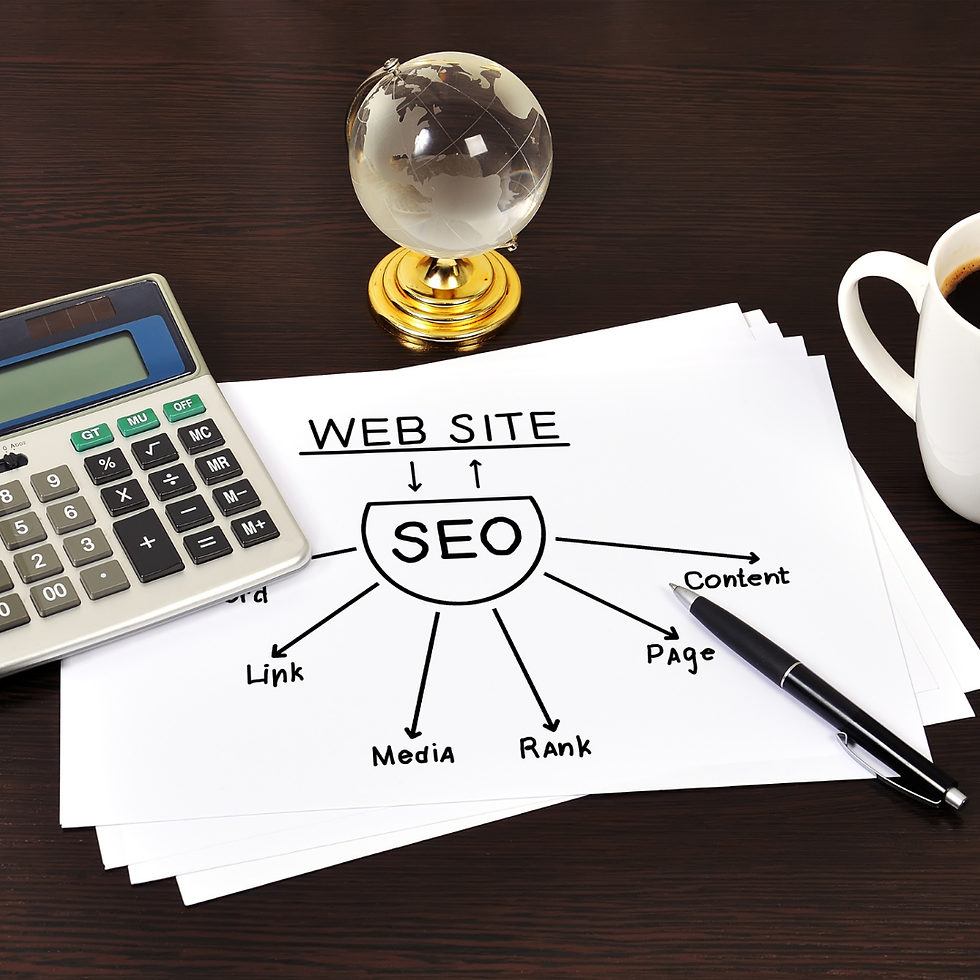Website Redesign Singapore 2025 | SEO & Conversion Checklist
- CHI Phạm
- Sep 22
- 4 min read
A website redesign in Singapore in 2025 means more than updating visuals. It’s about meeting Core Web Vitals, preserving SEO, and driving conversions.
This blog will walk you through redesign triggers, SEO migration best practices, Core Web Vitals benchmarks, accessibility, analytics setup, and a conversion checklist tailored for Singapore SMEs and enterprises.
Why Website Redesign Is Critical in 2025

The digital playing field has changed: Core Web Vitals, AI-driven search, and higher conversion rates are now what makes a business competitive. Find out more about how design and performance are related in our strategic brand and marketing solutions.
What’s changed in Singapore’s web landscape
Google’s Core Web Vitals: A major ranking factor, rewarding speed and stability.
Mobile-first users: 85% of Singaporeans browse on mobile.
AI-driven search (AEO/SGE): Sites must be structured for Google’s AI Overviews.
Conversion expectations: Users expect frictionless UX with WhatsApp, PayNow, and instant lead forms.
Accessibility compliance: Both global best practice and a local credibility factor.
Without a structured redesign, companies risk:
Dropping in organic rankings.
Losing conversions to faster competitors.
Paying more for ads due to poor landing page experience.
When Do You Need a Website Redesign in Singapore?

Redesigns are expensive — but waiting too long costs more in lost revenue.
Top signs
Slow loading speeds: Core Web Vitals below benchmark.
Outdated UX: Non-responsive or clunky navigation.
SEO drop-offs: Lost keyword rankings post-algorithm updates.
High bounce rates: Traffic but no conversions.
Rebranding: New products, services, or target audience.
Real case: A Singapore F&B brand rebuilt its site in 2024. Result: load time cut from 6.5s to 1.9s → online orders grew by 28% in 3 months.
Core Web Vitals: The Heart of Redesigns in 2025
Google prioritizes websites that deliver seamless user experiences.
Core Web Vitals Benchmarks
Largest Contentful Paint (LCP): < 2.5s
Interaction to Next Paint (INP): < 200ms
Cumulative Layout Shift (CLS): < 0.1
How to improve during redesign
Use next-gen image formats (WebP/AVIF).
Enable server-side caching + CDN for Singapore + APAC audiences.
Apply lazy loading for media.
Minify code and defer JavaScript.
Audit hosting — move if response times exceed 200ms.
SEO Migration: Protecting Your Rankings
One of the biggest mistakes SMEs make is launching a redesign without an SEO migration plan.
SEO Migration Checklist
Full Site Crawl — Benchmark existing URLs, metadata, backlinks.
Redirect Mapping — 301 old pages → new equivalents.
Preserve Metadata & Schema — Keep title tags, FAQs, structured data intact.
Update Internal Links — Prevent orphaned pages.
Re-Submit Sitemaps — Verify with Google Search Console.
Stat: 38% of Singapore sites lose >20% organic traffic post-redesign due to missing redirects.
Conversion-Centered Redesign Checklist
A “pretty” site won’t pay the bills unless it converts.
CRO (Conversion Rate Optimization) Elements
Above-the-fold CTA: “Contact Us” / “WhatsApp Now” in first screen view.
Localized trust signals: PropNex awards, ISO certifications, Singapore case studies.
Simple forms: 3–4 fields max.
Click-to-call + WhatsApp buttons: Vital in mobile-first Singapore.
Sticky navigation: Keep CTAs accessible on scroll.
UX/UI Must-Haves
Predictable navigation (services → industries → case studies).
Accessibility: color contrast, ARIA labels, keyboard navigation.
Clear pricing / package structures where relevant.
Accessibility & Inclusivity: Overlooked but Powerful
Accessibility is now tied to SEO + conversions.
Alt text improves both accessibility + Google Image ranking.
High-contrast design reduces bounce rates.
Screen-reader compatibility broadens reach.
Forms with error labels improve completion.
Singapore context: Accessibility is increasingly tied to government-linked contracts. Non-compliant sites risk losing tenders.
GA4 & Conversion Tracking Integration
A redesign is the perfect time to rebuild analytics.
Events to track in GA4
Button clicks (WhatsApp, forms).
Scroll depth.
Downloads (PDF, brochure).
E-commerce events: add-to-cart, purchase, refund.
Video engagement (play, pause, completion).
Combine GA4 with offline conversion import (CRM → Google Ads). Example: leads tracked online, closed offline in Singapore real estate.
Schema Markup & AEO (Answer Engine Optimization)
To appear in Google’s AI Overviews (SGE), schema is essential.
FAQPage schema: Boosts snippet and AI answer inclusion.
LocalBusiness schema: Strengthens Singapore-specific SEO.
Product/Service schema: Enhances SERP visibility.
Organization schema: Improves EEAT signals.
Cost of Website Redesign in Singapore (2025)
Type | Typical Cost (SGD) | Scope |
Basic SME Redesign | S$4,000 – S$7,000 | Mobile responsive, template-based |
SEO-Integrated Redesign | S$7,000 – S$12,000 | Core Web Vitals, SEO migration, GA4 setup |
Enterprise Redesign | S$15,000 – S$30,000 | Custom UX/UI, CRO, integrations (CRM/ERP) |
Conclusion
In 2025, a website redesign in Singapore is a business-critical investment, not a cosmetic refresh.
Core Web Vitals keep you competitive in rankings.
SEO migration safeguards years of traffic.
Conversion-first design boosts leads and sales.
Accessibility + GA4 integration ensure inclusivity and measurable ROI.
Schema markup + AEO optimization prepare you for the AI-driven search era.
SMEs and enterprises that redesign with this holistic approach gain a faster, smarter, and more profitable digital presence.Contact our team to build a conversion-driven website tailored for growth.
FAQs About Website Redesign Singapore 2025
How much does a website redesign cost in Singapore in 2025?
Between S$4,000 and S$30,000, depending on scope, SEO integration, and enterprise-level needs.
How do I ensure my SEO rankings don’t drop after a redesign?
Create a full SEO migration plan: redirect maps, preserve metadata, resubmit sitemaps, and test in staging before launch.
What Core Web Vitals should Singapore businesses target in 2025?
LCP < 2.5s, INP < 200ms, CLS < 0.1 — benchmarks that directly affect SEO and UX.
How long does a typical redesign project take?
6–12 weeks for SMEs; 3–6 months for larger enterprise builds with integrations.
Should I change hosting during a website redesign?
Yes, if response times exceed 200ms. Upgrading hosting improves Core Web Vitals and conversions.
.png)



Comments